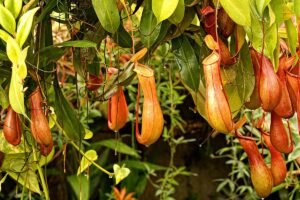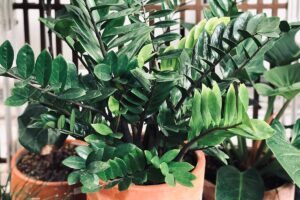Bromeliads have marvelous leaves. Even if they never bloomed, these unique plants are eye-catching just for their foliage, which often comes in stripy, spotted, and variegated patterns.
But bloom they do, and it only makes them all the more stunning.
Bromeliads encompass a striking range of species. Pineapples (Ananas comosus) and air plants (Tillandsia spp.), two very different species, are both in the Bromeliaceae family.
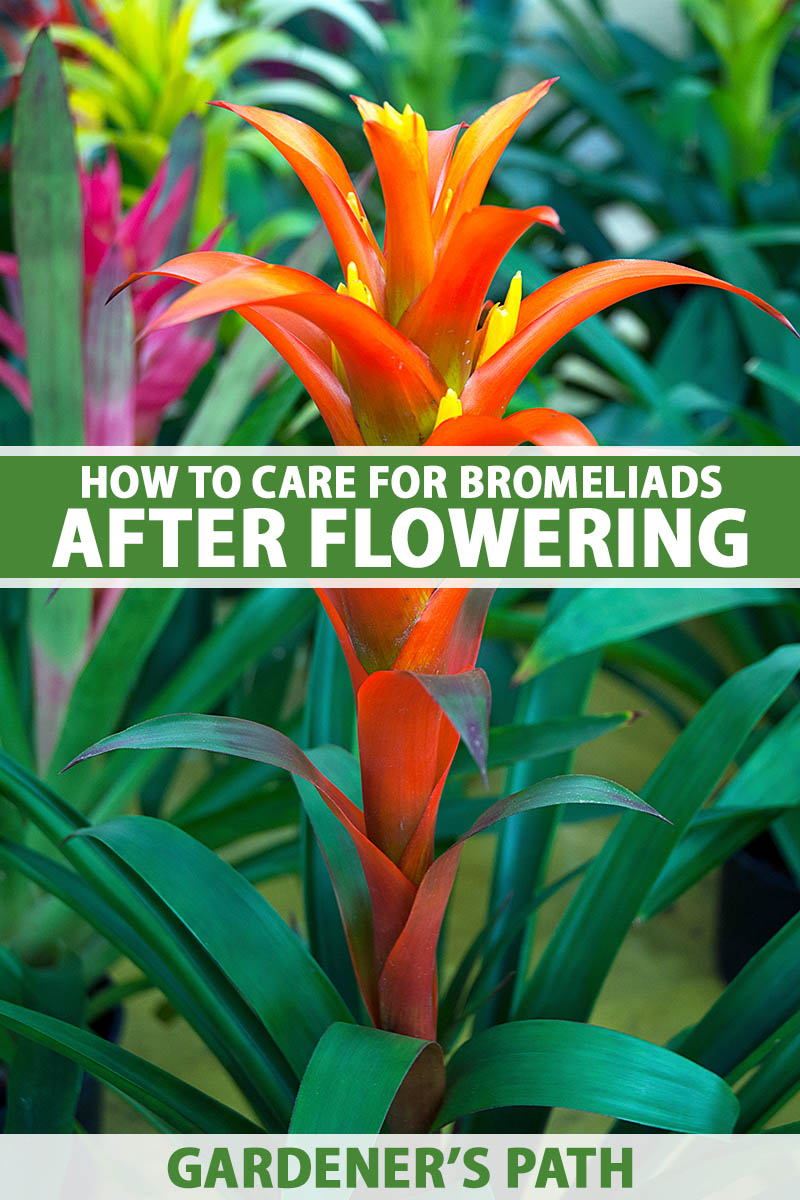
We link to vendors to help you find relevant products. If you buy from one of our links, we may earn a commission.
But one thing that almost all bromeliads have in common is that they have the same unusual habit of blooming and then dying.
We aren’t just going to toss our plants into the nearest trash after they flower, though. For one, they might live another year or two before they die completely.
On top of that, bromeliads put out offshoots that can be propagated and nurtured as new specimens. It’s an ongoing cycle that can keep you in bromeliads.
As such, the key is to figure out how to care for bromeliads as and after they flower. Coming up, this is what we’ll discuss:
What You’ll Learn
Don’t confuse the colorful bracts on the plant with the actual flowers.
Actually, it doesn’t matter if you confuse them, since they go hand-in-hand and appear at the same time. But if you’re curious about the structures, let’s discuss.
Bromeliad flowers tend to be small and appear in clusters at the end of the flower stem. This is known as an inflorescence, and it is enclosed by colorful leaf-like bracts.
It’s the bracts that people often mistake for being the flowers. The floral stems can be up to 15 feet long or under an inch tall, depending on the species.
Each actual flower has three petals and three sepals. They appear in groups, but they’re still not nearly as noticeable as the bracts.
Now let’s talk about how the the lifecycle works.
Do Bromeliads Only Flower Once?
The short answer is “yes,” most bromeliads flower one time, and then the parent plant dies.
The exceptions are species in the Dyckias and Hechtias genera, and some Tillsandia species, including Spanish moss (T. usneoides). These species can bloom repeatedly.
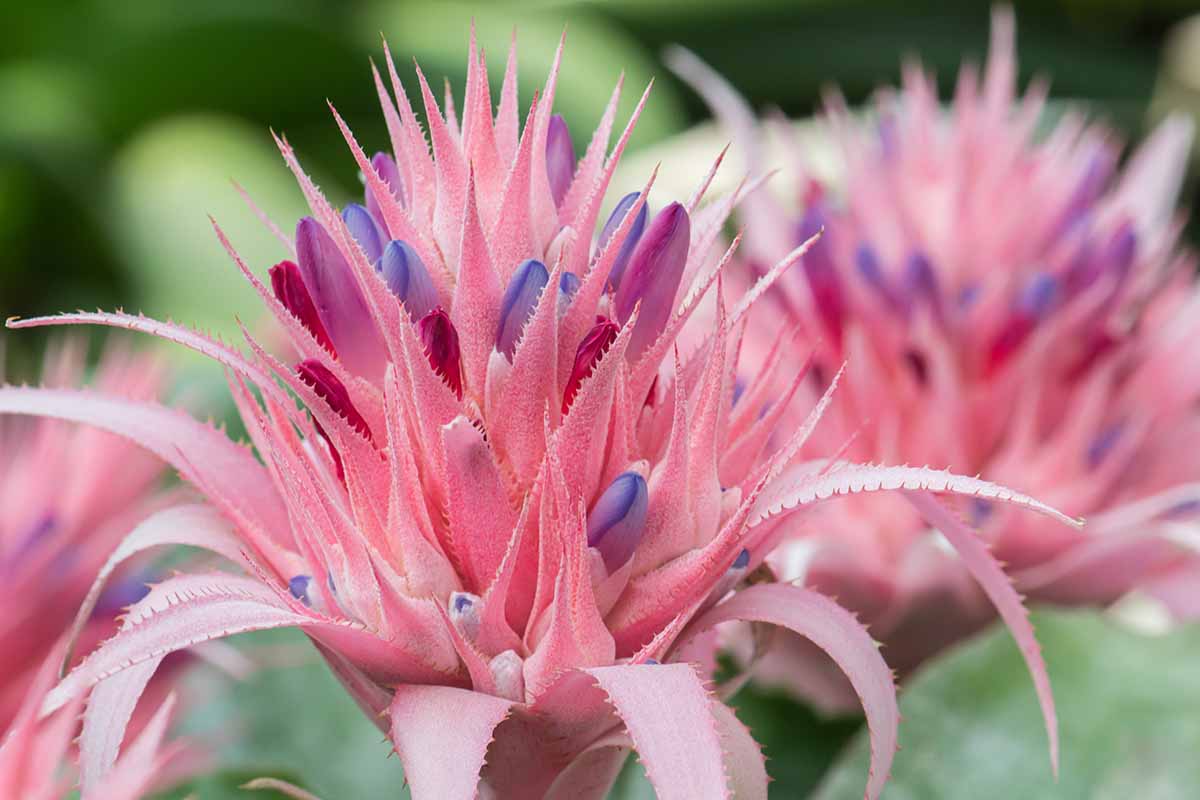
But just because the plant will start to fade after the flowers emerge, that doesn’t necessarily mean that it should be tossed out.
Even though the parent plant dies back, it will put out what are called “pups” or offshoots.
These small plantlets will eventually mature into adult specimens, so you’ll have another bromeliad (or five!) to grow and enjoy.
Why Does This Happen?
Most bromeliads are what is known as monocarpic.
Plants like cherry trees, lavender, roses, and other perennials are polycarpic, which means they produce blossoms and seeds annually for many years before dying.
Monocarpic plants produce seeds one time, and then they die.
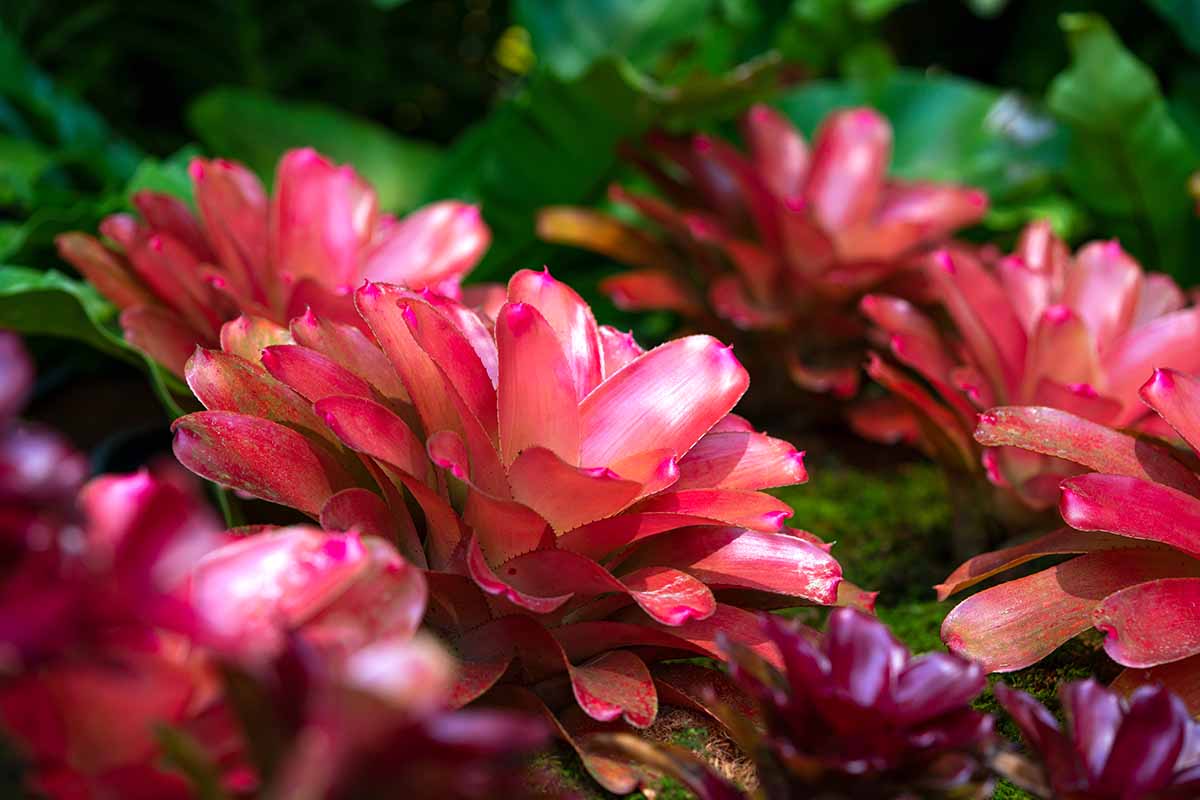
However, it’s important not to confuse monocarpic plants with annuals. Annuals complete their lifecycle in one year.
Monocarpic plants can live for years before they flower and set seed, but when they do, the parent plant will die. It might happen rapidly, or it might take a few years, but die, they will.
In the case of most terrestrial bromeliads, the plants can live for decades before they bloom.
When they start to produce flowers, the plants move their resources to the flowering parts, taking the energy away from the roots and foliage. This shift will eventually result in the plant’s death, which typically happens within a year or two of flowering.
Care During and After Flowering
To care for a flowering specimen, just keep on nurturing it as you have been in terms of water and light. There’s no need to change things up at this point.
Need to refresh your knowledge about growing bromeliads? Check out our guide.
Once the blooms fade and die, they will turn brown, dry, and go to seed. Unless you want to collect the seeds, you can cut off the flower parts.
It won’t hurt to leave the spent flowers on the plant, but it’ll look ugly. You can leave the colorful bracts on for as long as you want.
Now, your job is to care for the plants to support them as they develop their pups, assuming that you want to keep the offsets. If not, let it do its thing and treat it as you usually do.
The pups will develop into new specimens on their own, but you won’t have any control over where the pups root and mature.
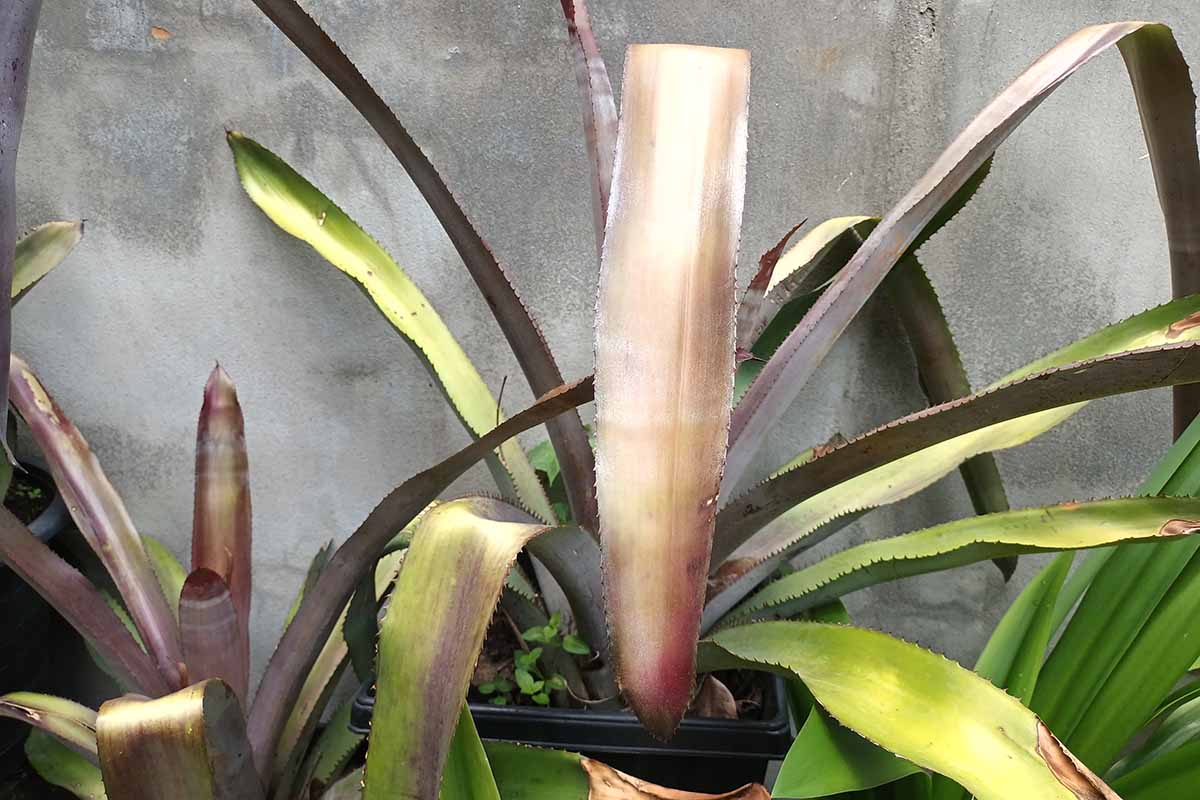
To support the plants if you want to propagate the pups, provide the regular amount of water and the appropriate light exposure.
That means bright, indirect light, and water when the surface of the substrate feels dry.
When it comes to feeding, provide food just once after the blooms fade. Use a mild, balanced fertilizer to give the specimen a boost of nutrients to support the offsets.
Raising Pups
I bet you didn’t think you’d be raising a litter of pups when you brought home your bromeliad, right?
If you don’t want to say “goodbye” to your bromeliad, you can propagate the offsets it produces.
Once they’ve reached about half the size of the parent, you can remove the pups and pot them up in their own containers. They will rapidly develop their own root systems, and soon enough, you’ll have full-sized specimens to enjoy.

If you can, don’t remove the pups until they are about half the size of the parent. That might mean you have to wait until the plant is nearly dead before you can remove the pups.
When the pups are large enough, you can gently cut them away and place them in their own pots.
If the pups aren’t able to obtain a large enough size before the parent dies, don’t worry.
You can still remove them and pot them up, but they’ll be quite vulnerable for a while, needing a bit of extra TLC.
Learn more about propagating bromeliads here.
Keep the Fun Going
Yes, it’s unfortunate that these plants can’t flower repeatedly, but we have to work with what we’ve got.
Just because its life is over doesn’t mean that the fun can’t continue. Pot up those pups and enjoy them.
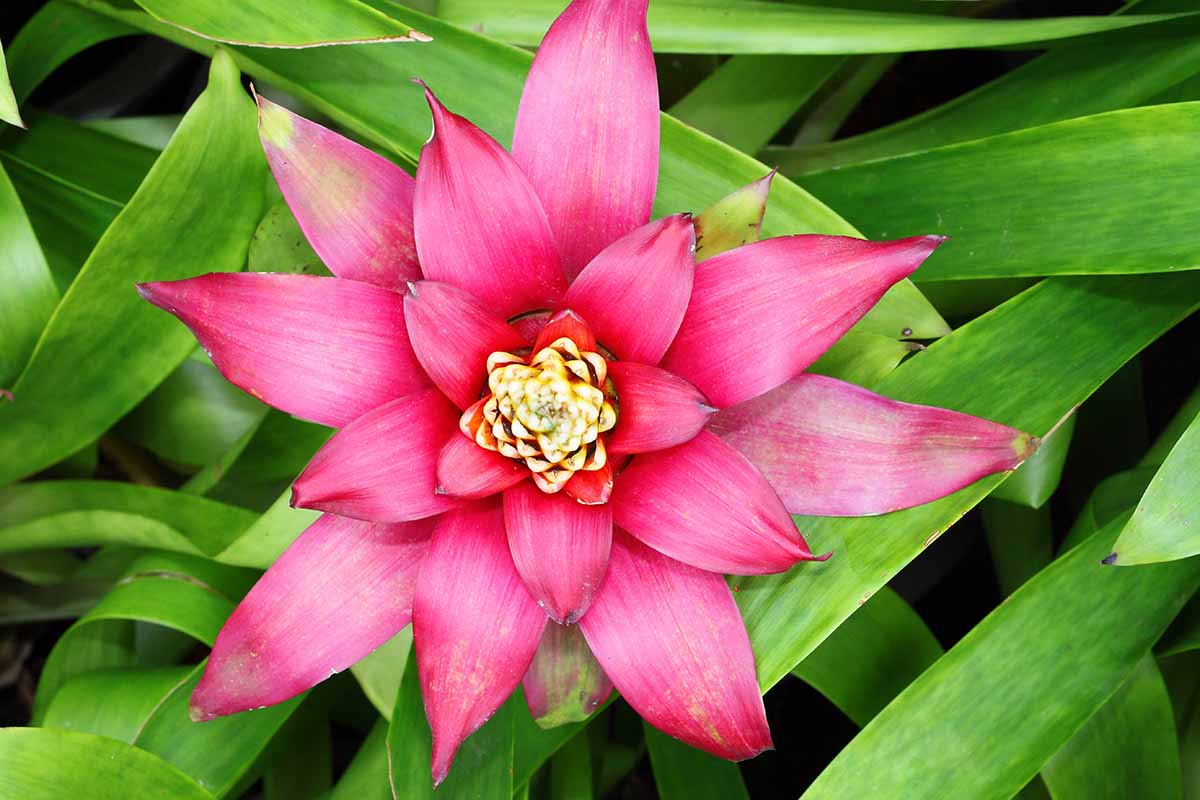
Fill us in on what kind of bromeliad you’re raising in the comments section below. Has yours flowered? Are you planning to separate the pups?
If you’d like to explore other houseplants and how to care for them, check out these guides next:
